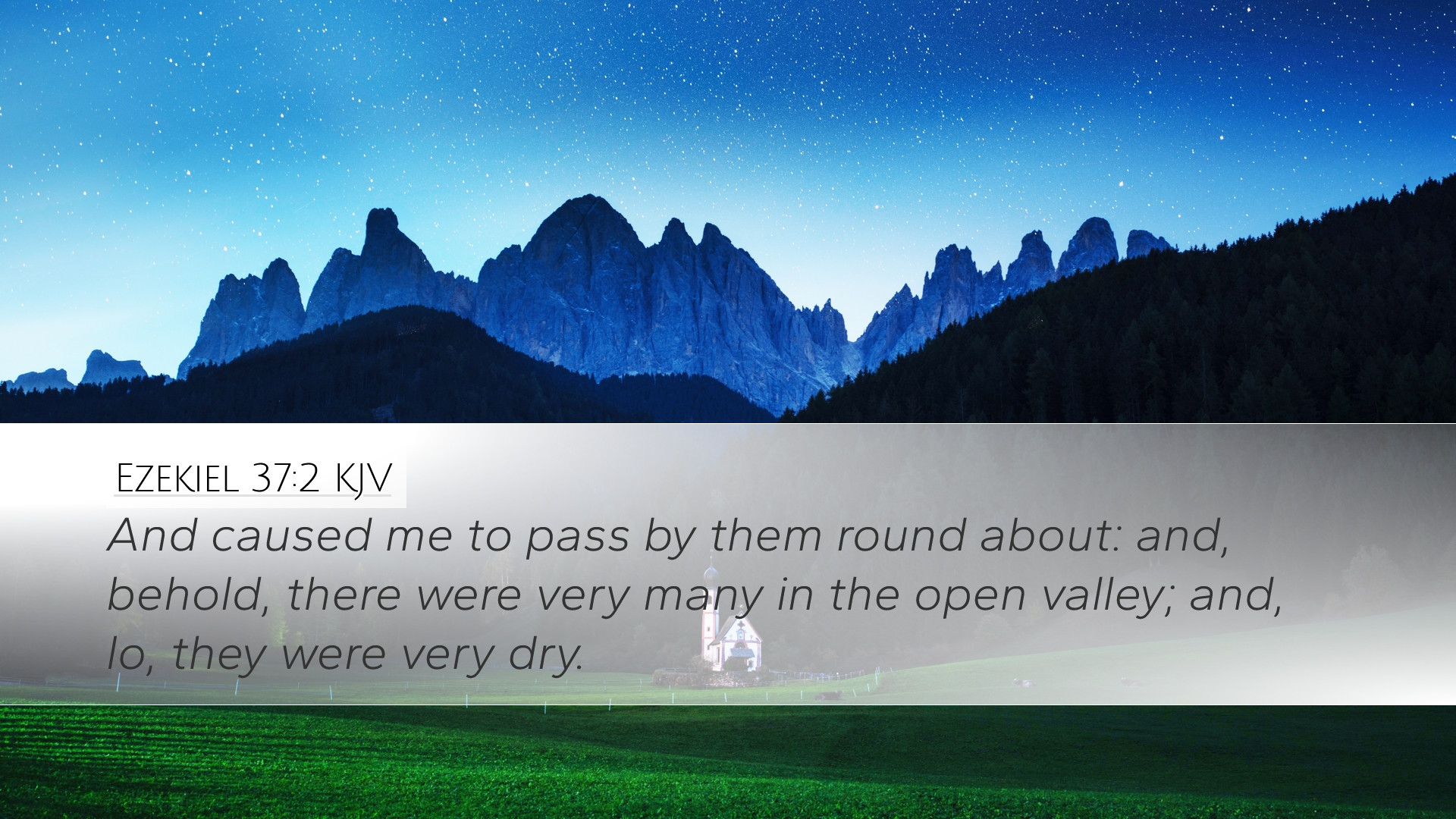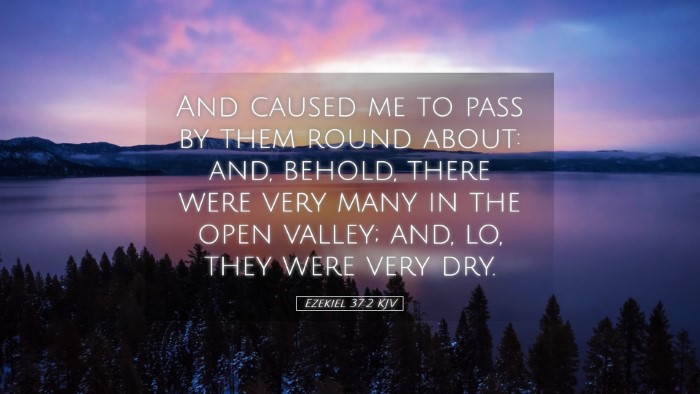Bible Commentary on Ezekiel 37:2
Verse: “And caused me to pass by them round about: and, behold, there were very many in the open valley; and lo, they were very dry.” (Ezekiel 37:2)
Introduction
The vision of the Valley of Dry Bones is one of the most profound prophecies found in the Book of Ezekiel. In Ezekiel 37:2, the imagery presented serves as a stark representation of Israel's spiritual condition during the Babylonian exile. This verse sets the stage for the following verses that unfold the promise of restoration and renewal. Commentators throughout history have elucidated the significance of this passage, drawing insights relevant to pastoral teaching, theological study, and personal reflection.
Contextual Analysis
This passage comes in a series of prophetic visions where God communicates not only judgment but hope for Israel's future. Historically, Ezekiel's ministry occurred in a period of despair for the Jewish people. They were exiled, feeling cut off from their homeland and traditional worship, symbolizing spiritual death. The imagery of dry bones evokes a stark realization of their current state and the miraculous transformation God promises.
Commentary Insights
Matthew Henry
Matthew Henry emphasizes that the condition of the dry bones symbolizes the hopelessness of the house of Israel. He explains, “They were very dry,” indicating that they had been in this state for a significant period, highlighting the depth of their condition. Henry notes the importance of the surrounding context—'the open valley'—as it represents the vulnerability and desolation of God’s people. He suggests that this vision serves as a reminder that no matter how bleak one's circumstance may appear, God's power can bring life from death.
Albert Barnes
Albert Barnes interprets the phrase "very many in the open valley" as an indication of the extensive reach of Israel’s plight. He contemplates the nature of the valley as a space of exposure, likening it to the spiritual barrenness experienced by the exiled Israelites. Barnes draws attention to God’s initiative in leading Ezekiel around the bones, emphasizing that God directs the prophet's attention to the reality of death before proclaiming life. This act signifies that understanding the full extent of despair is crucial for grasping the depth of divine restoration.
Adam Clarke
Adam Clarke offers an analytical view, focusing on the prophetic nature of the vision. He remarks that the very dryness of the bones points to a state of complete decay, which illustrates the degradation of Israel's spirit. Clarke asserts that the lack of flesh and sinews signifies a total absence of vitality, echoing the spiritual desolation facing the nation. He highlights the visionary aspect as divinely orchestrated, perfectly designed to display God's capability to revive and rejuvenate His people, critical for theological reflection on resurrection and hope.
Theological Implications
The implications of Ezekiel 37:2 extend beyond the historical narrative into theological reflections relevant to today's believers. The imagery of death, despair, and subsequent resurrection can apply to various contemporary contexts, including personal and communal struggles within faith communities.
- Spiritual Revival: The Valley of Dry Bones serves as an emblem of spiritual revival. It invites pastors and theologians to consider how God brings life to what seems lifeless, urging congregations to embrace renewal.
- Hope in Despair: The verse offers hope that resonates with individuals facing personal crises. Like the dry bones, believers may feel desolate, but God’s promise of restoration remains steadfast.
- Collective Restoration: The imagery can also be applied to a community level, where entire congregations may struggle with spiritual malaise. This passage speaks to the need for collective awakening and revival.
Conclusion
Ezekiel 37:2 is a poignant reminder of the stark reality of spiritual death and the promise of restoration that God offers to His people. Through the insights of esteemed commentators like Matthew Henry, Albert Barnes, and Adam Clarke, a rich tapestry of meaning emerges, reinforcing the idea that even in the depths of despair, God is at work through His Spirit to revive, restore, and bring hope. As pastors and scholars engage with this text, they are encouraged to consider both the historical context and its contemporary application, inviting others into the narrative of restoration found in Christ.


